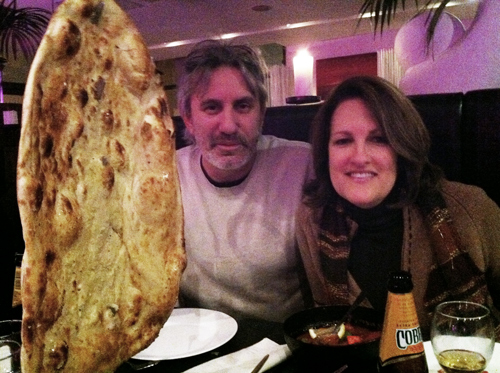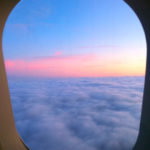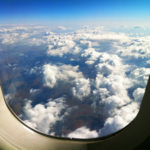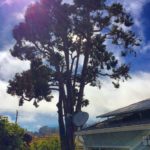
In Manchester, England, we check into the Radisson Edwardian, well situated in a recently gentrified, reconstructed, and re-imagined section of downtown. On our arrival night, we are just in time for a late dinner at the restaurant in the lobby, which repeats its name in an endless sign across its glass wall. In our jetlagged haze, both Jim and I could swear the joint is named Palo Alto (where he grew up and we both went to school), but a closer inspection shows the name is really Alto. Or Altoaltoaltoaltoaltoaltoaltoaltoaltoalto.
We have four nights at the Radisson: our arrival day, a day of scouting, and two days of shooting. In all that time, the temperature stays between 30 and 40 degrees, nearly always drizzly or overcast, never raining hard, never quite freezing. We are at 53 degrees latitude, well north of our homes in the Bay Area, which are at about 37 degrees. This far north, this early in January, Manchester experiences less than eight hours of daylight in each 24-hour cycle.
On our scout day, we meet our patient, whom I’ll call Tim, and our local lighting gaffer/chief electrician, Stuart Drummond. We examine Tim’s flat and determine it’s too small for our purposes shooting interviews and some lifestyle scenes, so he takes us instead to his parents’ home in the suburbs, to the gym where he works out, and to a pub where he hangs out with his fiancée and friends. We also meet his doctor at the cystic fibrosis center where Tim’s been treated for years.
In each location, our first priority is figuring out where to shoot our interviews. Because we like our interview backgrounds to be out of focus, we always need a lot of physical depth, and we shoot with a fast Zeiss DigiPrime 28mm T1.6 Cine Lens, set at its widest stop, to minimize depth of field. Besides scrutinizing each location for look and feel, we have to investigate parking and directions, loading access, ambient sound, nearness to sources of caffeine, water, and food, etc.
At the end of our scout day, Lori has a shooting schedule prepared. That night we walk through a cold drizzle to dinner at Akbar, a trendy Indian restaurant a few blocks from our hotel. We share an enormous family naan bread, which hangs menacingly at our table on a hooked naan holder. Thankfully, our lost Magliner cart and pizza box arrive from Heathrow during the night.

Andrew has rented all our lighting and grip equipment locally in Manchester. He also arranges logistics for the local crew, which, besides Stuart, consists of gaffer’s assistant (best boy) John Walsh, a grip named John Head, propmaster David Flowers, production assistant Danny Newton, and data manager Jason Cuddy, who will transfer all our file-based footage from the solid-state P2 cards on which it’s recorded to redundant hard drives which Randy has brought for archiving. Then the P2 cards are (gulp!) erased, and we use them again on another day. For more about P2 cards and the transfer (and erasure) of data in the field, see Living in Oblivion: On Creating, then Destroying Your Original Video Media.
Our story in Manchester is compelling. A debilitating lung disease, cystic fibrosis can kill at an early age, but Tim has defied the odds. At 28, employed in a high-pressure job with a future, he stays in great shape and is training for a half-marathon with friends, and recently purchased a flat with his fiancée. We film him working out at the gym, then running through the cold and drizzly streets.
Andrew shows us a location he has found out behind Tim’s flat, along the towpath near the locks of an old canal built to service Manchester’s former textile mills in the city center. With Randy and Jim, I get some shots of Tim jogging through this picturesque area. I have a new LL Bean parka for this trip, but I have my gloves off to operate the camera. It’s snowing lightly and bitter cold. As we head back to our van after the shot, I notice Andrew chatting with someone. We find out later that, just as we completed our shot, Andrew apparently saw a man walk off the towpath into the near-freezing waters of the canal.
“I pulled him out by the scruff of his collar,” says Andrew. We’re all stunned by this turn of events. “He was soaked and freezing but resisted all efforts to help him. Probably a stoner who didn’t know where he was.”
For the next several days, we toast Andrew’s heroic rescue of the stoner from the canal.
That afternoon we interview the doctor, who tells us that Tim is in great shape, and that the life expectancy of CF patients has increased dramatically over the past few decades. That night we eat tapas at a Spanish restaurant downtown, where we share a gorgeous paella.

For our shoot the next day, we need a homey environment, since our subject is home healthcare, our mantra “there’s no place like home.” So we inflict a home invasion on Tim’s parents’ house in the suburbs. In our interviews with Tim, his fiancée, and his dad, we learn that, for years when he was growing up, Tim’s antibiotic medications, necessary to control infection in CF patients, was delivered through a large, noisy breathing machine called a nebulizer, a bit bigger than a breadbox. By contrast, his meds now come in a small, portable, virtually silent, battery-powered breather device about twice the size of my DirecTv remote, making it much easier for him to keep to his treatment regimen no matter where he is, at home, at work, at play, or traveling.
We set up our camera and lighting gear in the most open space in the house, the glass-enclosed sun room at the back. Amazingly, the sun comes in and out at the worst times while we are rolling on our interviews, making our shots alternately too bright and too dark as we rush to compensate and keep an even look.

In the afternoon, we rush out front during a short-lived patch of lovely sunshine, to get some shots of the house and neighborhood, with our camera mounted on a locally rented jib arm — really, a teeter-totter with the camera on one end and weights on the other, designed to move the camera smoothly through space. Despite the fact that I ordered an arm in the 6-8 foot range, the rental company has supplied an Egripment Mini-Jib, which is a beautifully engineered hunk of metal, but hopelessly small. The distance from the fulcrum to the camera seems no more than three feet, making our moves disappointingly short.
Randy says, “That’s not a jib, it’s a stub!”
At the same time, we are amused by the patter of our grip John Head, who says of his own name: “Really, if you’re a bit nautical, it means toilet-toilet, doesn’t it?”

We shoot a scene of Tim and fiancée working in the kitchen, then wrap out of the parents’ house, thanking them for their gracious hospitality and the opportunity to shoot in a British home. We set up at a local pub. Tim and his fiancée have arranged to meet friends so we can shoot them socializing and having fun. Stuart and John put two of our HMI lights outside, one streaming in on our people in a booth by the window, one lighting the greenery outside. Add a couple of Kino-Flos for fill light on the inside, and we have a warm, inviting pub scene.
This completes our shoot in England, so we wrap our gear to fly out next day, while enjoying samples of the local beer. After all, we were in a pub.

That night we eat again at Altoaltoaltoaltoaltoaltoaltoaltoaltoalto. Lori gets bubble and squeak, which just sounds dangerous, Jim and I have to have the traditional English fish and chips, and Randy threatens to order spotted dick for dessert, just because. But they’ve run out, and I think he’s relieved.
That night we are shocked to hear about the massacre in Tucson, six dead, a dozen injured, a young Congresswoman with a bullet through her brain. We’re enraged that Gabrielle Giffords is one of the Representatives targeted in Palin’s “crosshairs” graphic.
Next morning at six we check out of the Radisson before breakfast opens, load the van (without coffee!), and head back to Heathrow. We are just beginning to adjust to the time change in the UK, five nights since we left San Francisco, but we say goodbye to Andrew and dive back into Airline World and bad air. We roll to Customs at Heathrow, have our carnet stamped so we can take our gear out of the country, then check in for the flight to Japan.
Meanwhile details about the tragedy in Tucson are unfolding. It’s disorienting to be out of the country at a time of turmoil. Randy and I were in Japan in December 2000 when the Supreme Court gave the Presidency to George Bush, and it was weird to have this contentious Presidential succession occur suddenly while we were abroad.
As we board our plane in London, we pore over the morsels we have gleaned on the way. The sheriff in Arizona has announced that the weapon was a Glock 9 automatic pistol, and Jim wonders if there was a second gunman, theorizing that a Glock, without reloading, couldn’t hold enough rounds to cause as much mayhem as occurred in Tucson. With my iPhone, I find a news site online that tells me a Glock extended magazine can hold up to 33 rounds. I pass that along to Jim, turn off my phone, and settle in for our flight to Tokyo.
TO BE CONTINUED





